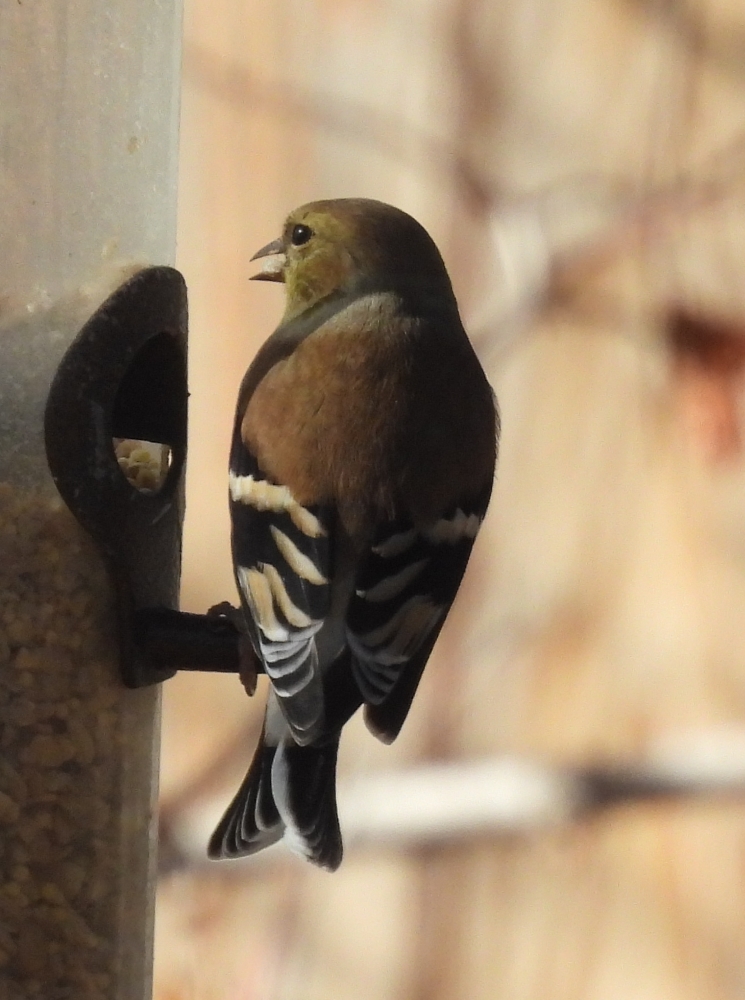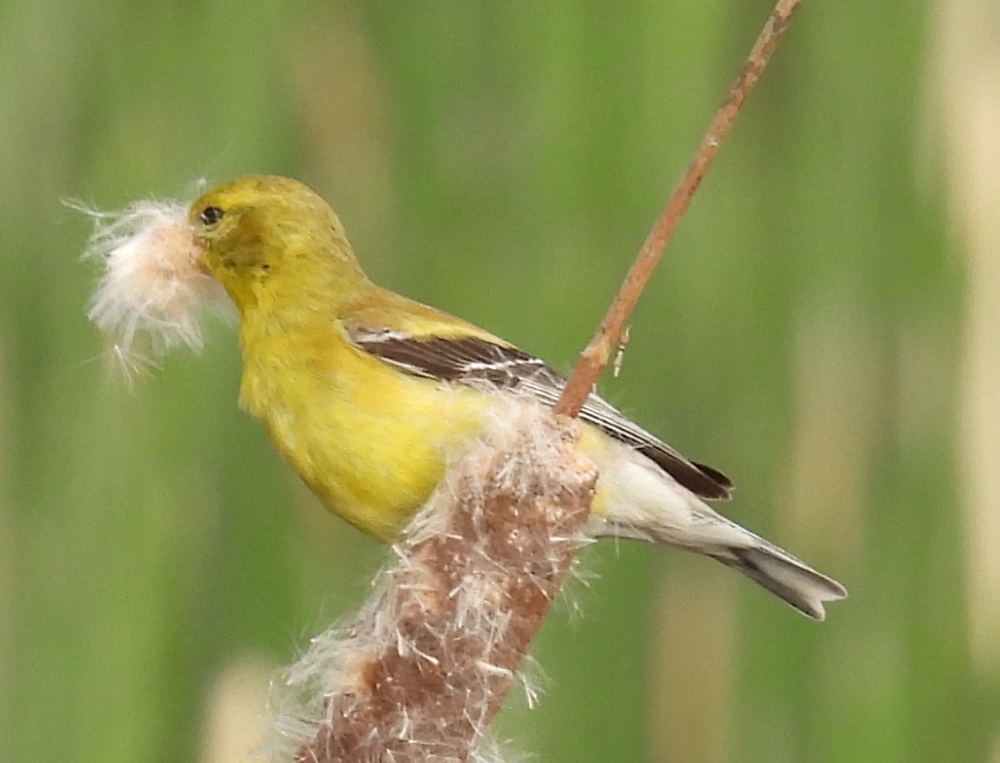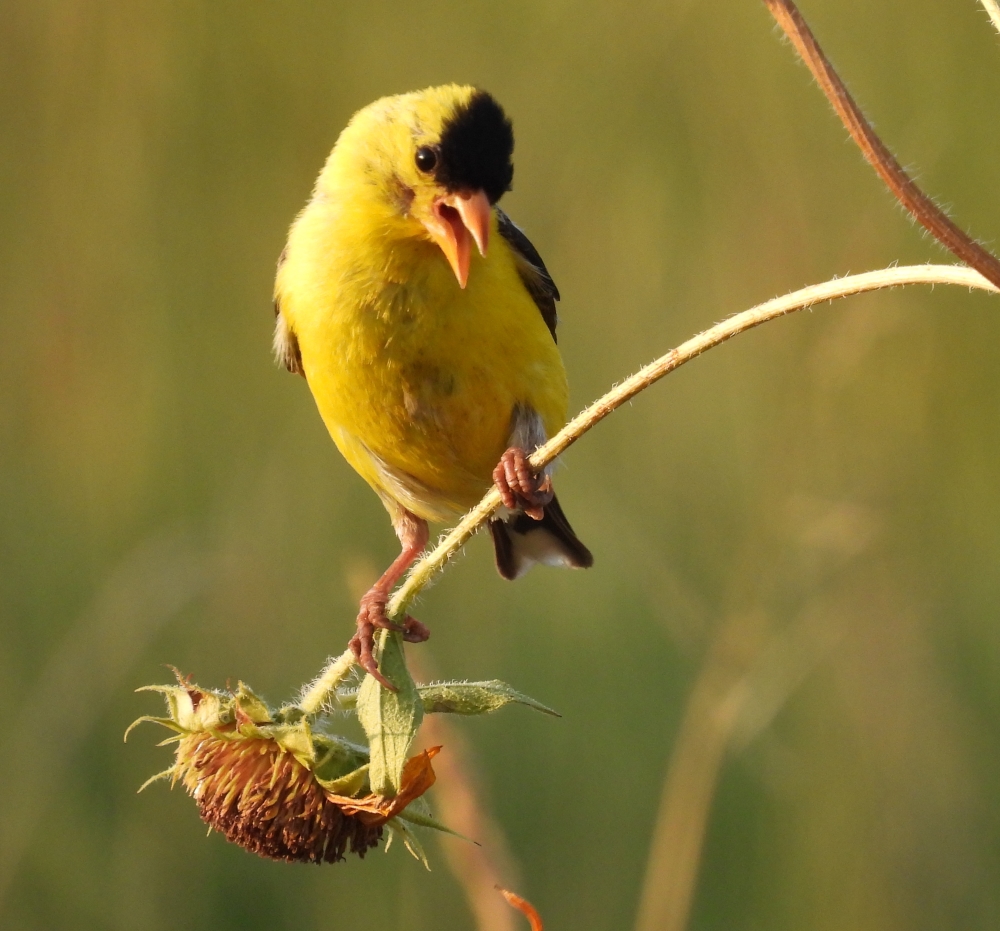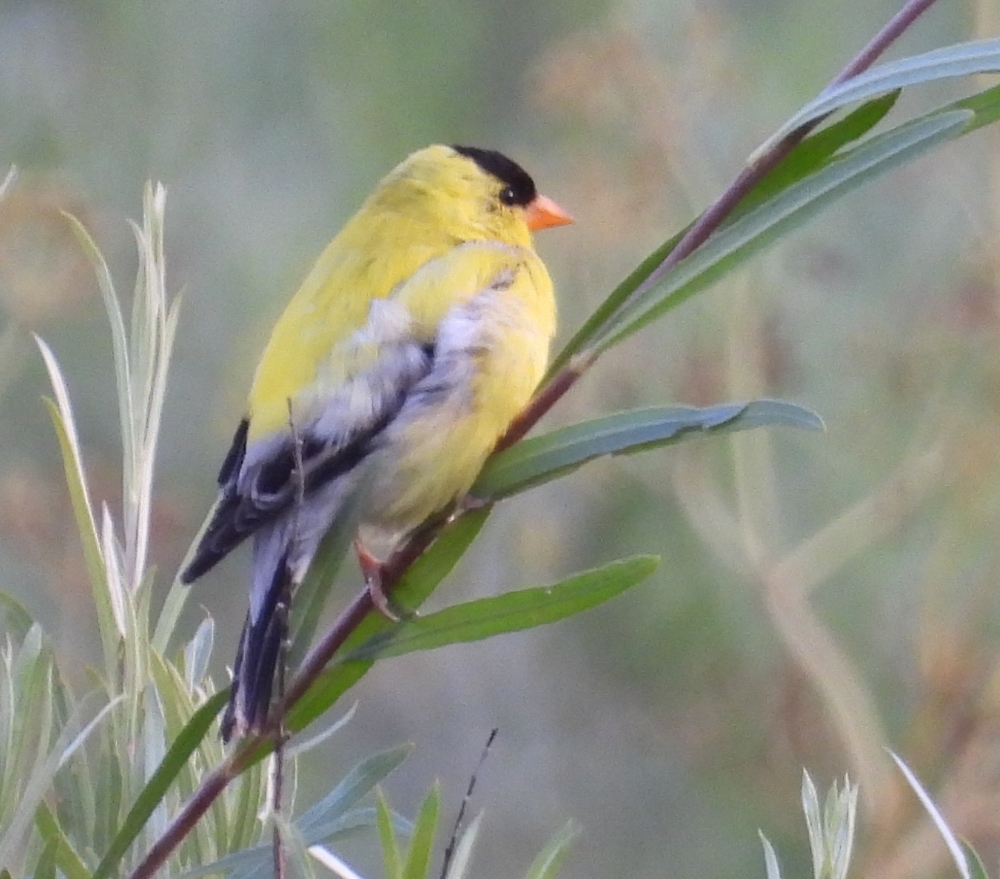In the summer, male American Goldfinches (Spinus tristis) look and sound very similar to yellow canaries. They are bright yellow, with black wings, tail and forehead. Surprisingly, despite their bright color, they can be difficult to spot at times, hiding behind the leaves on trees. Female American Goldfinches are a duller yellow-green in the summer. In other seasons, all of the American Goldfinches have much more subdued coloration of yellowish-gray to brown, although still with bold wing-bars.
They are year-round residents of the Willow Spring Open Space and the neighborhoods around it, eating thistles and sunflower seeds in the Open Space and thistle seeds at feeders. They are also summer residents in the mountains. They are almost always seen in flocks.
American Goldfinches are in the Passeriformes Order, or passerines, which includes perching birds and songbirds. Birds in this order have a toe structure that is well-adapted to perching by being 3 toes facing forward and 1 toe facing backwards on each foot.
How to Recognize an American Goldfinch
American Goldfinches are about 4″ to 5″ long. Although the males change their colors with the season, going from bright yellow to olive green, in every season both males and females have dark brown to black wings with a notched tail and bold wing-bars. They have a short, conical bill and a short tail.
Birding books refer to their song is “po-ta-to-chip” and it is a high-pitched squeaky sound.
They are in the Fringillidae family, which includes finches. These are seed-eating birds with undulating flight. The closest species here are the Lesser Goldfinch, which is smaller and darker and has a white wing patch, and the Pine Siskins, which are brown with striped chests and yellow wing-bars.


Through the Seasons – migration, mating, nesting
American Goldfinches in the U.S. Rocky Mountain region may stay and not migrate at all, or may migrate short distances when there is a harsh winter.
Nesting can begin as early as May-June or wait until July when the thistle and milkweed plant down are available for use in their nests. The female builds the nest anywhere from 2-20 feet above ground in the fork of a thistle, shrub or deciduous tree. The female starts the nest with spider silk, then adds rootlets and last is the soft thistle or milkweed down.
The female lays about 4-6 eggs which are about 3/4″ long. She incubates them for 12-14 days, with the male feeding her during that time. Once hatched, they are covered with down until their feathers come in after about a week. At that time, they are ready to leave the nest, although the male cares for them for 3 more weeks after that. Then they are able to forage for seeds on their own.
American Goldfinches eat mostly seeds and grains along with a few insects. In feeders, they flock to Nyjer thistle seeds.
Where to find in Willow Spring Open Space
They are often seen flitting among the trees along the walking path and frequently heard with their squeaky Po-ta-to-chip song. In late summer, flocks are frequently seen gathering sunflower seeds on the south-facing slope of the Englewood Dam or the hill going up to Homestead Parkway.

Did You Know?
The flight of an American Goldfinch looks like a rollercoaster, with big dips, even when flying a short distance. Like Black-capped Chickadees, Goldfinches can dangle upside-down from plant stems when feeding on their seeds.
References and Further Reading
- Wild About Rocky Mountain Birds: A Youth’s Guide to the Rocky Mountain States, by Adele Porter, 2012
- Peterson First Guide to Birds of North America, by Roger Tory Peterson, 1986
- The Sibley Field Guide to Birds of Western North America: Second Edition, by David Allen Sibley, 2016
- National Geographic Field Guide to the Birds of North America: Seventh Edition, by Jon L. Dunn and Jonathan Alderfer, 2017
- Great Courses, The National Geographic Guide to Birding in North America, Course 7782, James Currie
- Kaufman Field Guide to Birds of North America, by Kenn Kaufman, 2000


